This list is one of the annexes of the book „Pátrání po Silvestrovi“ („Searching For Silvestr“) about Czechoslovaks in Singapore before and during the WW2. The book is being launched in the Czech language in October 2020. Finding options to publish it in English is one of my upcoming projects…
The following information has been compiled by me [Jan Beránek] and Olek Plesek from these contemporary sources: the List of Baťa Employees Overseas (1944); the Nominal Roll of Czechoslovak Citizens in Singapore, as prepared by the Czechoslovak Consulate in India (1942); the archive of personal files of Baťa employees, stored in the State Archives in Zlín; library of the Singapore press (1935-1960); list of the European citizens interned in the Changi Prison during Japanese occupation of Singapore (1945); documents available on the online portals of findmypast.co.uk and the Australian National Archive. Important contributions were made by Jonathan Moffatt and Michael Pether. Some of the information were provided by the families – descendants of the Baťa employees involved.
Updated on 13th December 2020.
The Czechoslovaks working for the Baťa Shoe Co.
 Adamík Jaroslav (*1910). Educated as a shoemaker, he graduated the Baťa School of Work („Baťova škola práce“). He joined the company in July 1927, worked at the position of a store-keeper. He left for Singapore in August 1938, his new position there being one of a unit head. He managed to evacuate on 11th February 1942 to India, where he consequently worked for Baťa factory in Batapur (today’s Pakistan). His wife Božena with son Jaroslav were evacuated to India, along with 30 other Czech and Slovak women and children, already on 1st February 1942 aboard of the Empress of Japan. They were provided an asylum in the Petersfield School in Nainital. According to a report from 1946, Adamik left the company and was employed by Janda Co. in Lahore. In December 1956, he travelled aboard of Queen Mary liner from London to New York, along with his wife and daughter Pavla. The passenger list says that their last country of residence was Pakistan. In May 1960 he and his wife travelled from London to Montreal, Canada, aboard of Ivernia. He later settled in US. His daughter Pavla is currently living in Texas.
Adamík Jaroslav (*1910). Educated as a shoemaker, he graduated the Baťa School of Work („Baťova škola práce“). He joined the company in July 1927, worked at the position of a store-keeper. He left for Singapore in August 1938, his new position there being one of a unit head. He managed to evacuate on 11th February 1942 to India, where he consequently worked for Baťa factory in Batapur (today’s Pakistan). His wife Božena with son Jaroslav were evacuated to India, along with 30 other Czech and Slovak women and children, already on 1st February 1942 aboard of the Empress of Japan. They were provided an asylum in the Petersfield School in Nainital. According to a report from 1946, Adamik left the company and was employed by Janda Co. in Lahore. In December 1956, he travelled aboard of Queen Mary liner from London to New York, along with his wife and daughter Pavla. The passenger list says that their last country of residence was Pakistan. In May 1960 he and his wife travelled from London to Montreal, Canada, aboard of Ivernia. He later settled in US. His daughter Pavla is currently living in Texas.
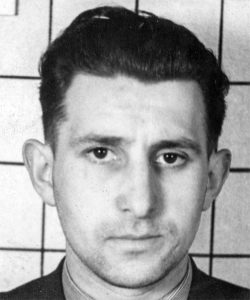 Ambrož Pavel (*1912). He was born in Vyškov, was educated as a shop assistant. He joined Baťa in October 1936 as a supplier, later a salesman in Jihlava. There is also a record of him working as a short term construction worker for Baťa in 1935. He left for Batanagar in India as a supplier in November 1938. At the outbreak of the war in Pacific, he was however based in Singapore. He joined the local volunteers (SSVF – Straits Settlements Volunteer Force) on 15th November 1940. After the capitulation, he managed to avoid being captured as a POW (he changed his cloths to civilian), and lived and worked in Singapore until he was eventually interned in December 1943. He was interned in the Changi Prison, where under number 3365 he occupied the cell 4.4.25. Later in the Sime Road internment camp in 1944 he was in the hut #114. After the liberation, he sailed in October 1945 to India for recovery, along with his other colleagues. He returned to Czechoslovakia in October 1947, and stayed there.
Ambrož Pavel (*1912). He was born in Vyškov, was educated as a shop assistant. He joined Baťa in October 1936 as a supplier, later a salesman in Jihlava. There is also a record of him working as a short term construction worker for Baťa in 1935. He left for Batanagar in India as a supplier in November 1938. At the outbreak of the war in Pacific, he was however based in Singapore. He joined the local volunteers (SSVF – Straits Settlements Volunteer Force) on 15th November 1940. After the capitulation, he managed to avoid being captured as a POW (he changed his cloths to civilian), and lived and worked in Singapore until he was eventually interned in December 1943. He was interned in the Changi Prison, where under number 3365 he occupied the cell 4.4.25. Later in the Sime Road internment camp in 1944 he was in the hut #114. After the liberation, he sailed in October 1945 to India for recovery, along with his other colleagues. He returned to Czechoslovakia in October 1947, and stayed there.
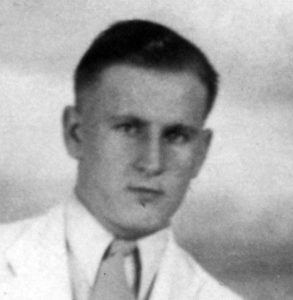 Bleha Josef (*1916). He joined Baťa in November 1932, graduated the Baťa School of Work and then worked as a seller in a store. His last departure for Singapore was in May 1939 as a deputy head of a store, but we know that he was there before: he is mentioned in the local press in 1934 and 1937, and he is mentioned of being there already in 1932 by Josef Kramoliš. At the time the war started in the Pacific, he was stationed in Siam (Thailand), and thanks to that he was not directly impacted. He and his wife Božena sailed in March 1947 on Franconia from Liverpool to Bombay. At that time, he worked for the London branch of the Bata Shoe Co., and gave Indochina as his destination.
Bleha Josef (*1916). He joined Baťa in November 1932, graduated the Baťa School of Work and then worked as a seller in a store. His last departure for Singapore was in May 1939 as a deputy head of a store, but we know that he was there before: he is mentioned in the local press in 1934 and 1937, and he is mentioned of being there already in 1932 by Josef Kramoliš. At the time the war started in the Pacific, he was stationed in Siam (Thailand), and thanks to that he was not directly impacted. He and his wife Božena sailed in March 1947 on Franconia from Liverpool to Bombay. At that time, he worked for the London branch of the Bata Shoe Co., and gave Indochina as his destination.
 Boďa Jan (*1912). His family was living near Bratislava. He joined Baťa in September 1927 as a rubber laboratory technician. Left for Singapore with his wife and son Jan (*1937) in March 1939, his new position with Bata there was the head of production of rubber shoes – as a director of the company’s factory in Klang, Malaya. He had signed up for the Local Defense Corps (LDC) and served there under registration number 180. He managed to evacuate himself to India on 11th February 1942; his wife, son Jan and daughter Helena (*1940 in Klang) travelled there earlier, ahead of him. Another son Zdeněk was born to him and his wife in September 1942 in India. Jan Boďa got a position with Baťa in Batapur, later moved to Lahore, where his second daughter Věra was born in 1945. He was further moved to Batanagar by the company in 1956. Three years later, he was sent to the Bata factory in East Tilbury, UK. He died in England in 1971. His daughter Věra married in 1970 to Olek Plešek – a son from a Bata employee family from Batanagar. Both Věra and Olek now live in Australia.
Boďa Jan (*1912). His family was living near Bratislava. He joined Baťa in September 1927 as a rubber laboratory technician. Left for Singapore with his wife and son Jan (*1937) in March 1939, his new position with Bata there was the head of production of rubber shoes – as a director of the company’s factory in Klang, Malaya. He had signed up for the Local Defense Corps (LDC) and served there under registration number 180. He managed to evacuate himself to India on 11th February 1942; his wife, son Jan and daughter Helena (*1940 in Klang) travelled there earlier, ahead of him. Another son Zdeněk was born to him and his wife in September 1942 in India. Jan Boďa got a position with Baťa in Batapur, later moved to Lahore, where his second daughter Věra was born in 1945. He was further moved to Batanagar by the company in 1956. Three years later, he was sent to the Bata factory in East Tilbury, UK. He died in England in 1971. His daughter Věra married in 1970 to Olek Plešek – a son from a Bata employee family from Batanagar. Both Věra and Olek now live in Australia.
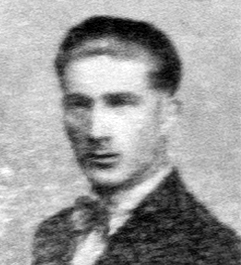 Bohman Matěj (*1911). He joined Baťa in August 1925,graduated the Baťa School of Work and then worked as a supplier. He left for Singapore in August 1938 as a seller. There, he joined the SSVF. He saw action during the battle of Singapore, fought along with an Australian named Edward. During Japanese occupation, he was interned in December 1943 in the Changi Prison under number 3368, occupying the cell 4.4.26; after he was moved to the Sime Road internment camp in 1944, was in the hut #114. His wife Marie (*1912) with two children, Milan (*1937) and newborn Marie (* October 1941), were evacuated on 1st February 1942 to India. There she was given asylum house in Nainital. After the liberation, sailed in October 1945 to India for recovery, along with his other colleagues. He also visited Czechoslovakia. Died in 1990 in Singapore. Marie divorced him already in 1940’s and remarried to Petr Havrlant, the manager of the Bata tannery in Mokamehghat, India. Their family moved to Australia in 1947.
Bohman Matěj (*1911). He joined Baťa in August 1925,graduated the Baťa School of Work and then worked as a supplier. He left for Singapore in August 1938 as a seller. There, he joined the SSVF. He saw action during the battle of Singapore, fought along with an Australian named Edward. During Japanese occupation, he was interned in December 1943 in the Changi Prison under number 3368, occupying the cell 4.4.26; after he was moved to the Sime Road internment camp in 1944, was in the hut #114. His wife Marie (*1912) with two children, Milan (*1937) and newborn Marie (* October 1941), were evacuated on 1st February 1942 to India. There she was given asylum house in Nainital. After the liberation, sailed in October 1945 to India for recovery, along with his other colleagues. He also visited Czechoslovakia. Died in 1990 in Singapore. Marie divorced him already in 1940’s and remarried to Petr Havrlant, the manager of the Bata tannery in Mokamehghat, India. Their family moved to Australia in 1947.
 Čepka Alois (*1910). Born in Moravská Ostrava, joined Baťa in March 1936: first as an accountant and correspondent, later as tyre seller. It is also in that position, he was sent to Singapore in February 1938. There he joined the SSVF where he served as Private #12973. First he was attached to the Singapore Royal Engineer Volunteers (SREV), which was later reorganized; consequently, Čepka was in the Bomb Disposal Unit under the command of Charles Kinahan. He was interned in December 1943 in the Changi Prison during the Japanese occupation, under number 3369 in the cell 4.4.25. After he was later, in 1944, moved to the Sime Road internment camp, he occupied the hut #114. Following the liberation, sailed in October 1945 to India for recovery, along with his other colleagues. In 1946, he was on vacations in Czechoslovakia where he filed a request for „certificate nationality and reliability“. He is recorded to sail with wife Jaroslava and their two children (Alice and Eduard) on a French ship Liberté from Southampton to New York. He died in Canada.
Čepka Alois (*1910). Born in Moravská Ostrava, joined Baťa in March 1936: first as an accountant and correspondent, later as tyre seller. It is also in that position, he was sent to Singapore in February 1938. There he joined the SSVF where he served as Private #12973. First he was attached to the Singapore Royal Engineer Volunteers (SREV), which was later reorganized; consequently, Čepka was in the Bomb Disposal Unit under the command of Charles Kinahan. He was interned in December 1943 in the Changi Prison during the Japanese occupation, under number 3369 in the cell 4.4.25. After he was later, in 1944, moved to the Sime Road internment camp, he occupied the hut #114. Following the liberation, sailed in October 1945 to India for recovery, along with his other colleagues. In 1946, he was on vacations in Czechoslovakia where he filed a request for „certificate nationality and reliability“. He is recorded to sail with wife Jaroslava and their two children (Alice and Eduard) on a French ship Liberté from Southampton to New York. He died in Canada.
 Červinka Hynek (*1906). Was educated as a shop assistant and a tailor. He joined Baťa in July 1929 as a seller. Left for Singapore in August 1938 as a chief of department. His wife and two children, Ludmila and Tomáš, were successfully evacuated on 1st February 1942 to India and accommodated in Petersfield School in Nainital. Červinka tried to escape on the ship SS Redang, which was sunk on 12th February, but he managed to survive, was arrested and interned at a camp in Palembang, Sumatra. However he was soon released and together with Koš and Zelníček (see below) travelled to Medan where he lived for the rest of the war. At the end of October 1945, he was passing through Singapore on his way to Batanagar, India. Shortly after that he was employed in a Czechoslovak company, and in November 1947 applied for a position at Baťa again, but was not accepted. He remained in Czechoslovakia, where he lived in Malenovice. He died in 1984, his wife in 1989.
Červinka Hynek (*1906). Was educated as a shop assistant and a tailor. He joined Baťa in July 1929 as a seller. Left for Singapore in August 1938 as a chief of department. His wife and two children, Ludmila and Tomáš, were successfully evacuated on 1st February 1942 to India and accommodated in Petersfield School in Nainital. Červinka tried to escape on the ship SS Redang, which was sunk on 12th February, but he managed to survive, was arrested and interned at a camp in Palembang, Sumatra. However he was soon released and together with Koš and Zelníček (see below) travelled to Medan where he lived for the rest of the war. At the end of October 1945, he was passing through Singapore on his way to Batanagar, India. Shortly after that he was employed in a Czechoslovak company, and in November 1947 applied for a position at Baťa again, but was not accepted. He remained in Czechoslovakia, where he lived in Malenovice. He died in 1984, his wife in 1989.
 Chudárek Stanislav (*1914). Born in Polešovice na Moravě, joined Baťa in December 1928. Worked as a regional controller of Baťa shops, in the same position left for Singapore in September 1938. During Japanese occupation, he was interned in December 1943 in the Changi Prison under number 3370 in the cell 4.4.18. He was later, in 1944, moved to the Sime Road internment camp, and was placed in the hut #114. After the liberation, he sailed in October 1945 to India for recovery, along with his other colleagues. Returned to Czechoslovakia in 1946 and in July married there Hedvika Sloupská. Since September 1946 worked in Calcutta, two years later moved to Singapore. There, in 1962, he took over the director position from departing Antonín Jugas. In 1963, the company directorate was moved to Klang in Malaysia, where Chudárek prematurely died in 1969.
Chudárek Stanislav (*1914). Born in Polešovice na Moravě, joined Baťa in December 1928. Worked as a regional controller of Baťa shops, in the same position left for Singapore in September 1938. During Japanese occupation, he was interned in December 1943 in the Changi Prison under number 3370 in the cell 4.4.18. He was later, in 1944, moved to the Sime Road internment camp, and was placed in the hut #114. After the liberation, he sailed in October 1945 to India for recovery, along with his other colleagues. Returned to Czechoslovakia in 1946 and in July married there Hedvika Sloupská. Since September 1946 worked in Calcutta, two years later moved to Singapore. There, in 1962, he took over the director position from departing Antonín Jugas. In 1963, the company directorate was moved to Klang in Malaysia, where Chudárek prematurely died in 1969.

Dufek Antonín (*1911). Was born in Slavičín in Moravia, educated as a locksmith. He joined Baťa in November 1929, graduated the Baťa School of Work and got a job as a turner in Baťa factory. In 1937, he worked for the Baťa Aviation Zlín Company which was building airplanes. He left for Singapore in August 1938 as a chief of machinery in the unit of Jaroslav Adamík (see above). He evacuated to India on 11th February 1942, following his wife Anna and daughter Marie who both left already on 1st February 1942. They later lived in Bombay. After the war, he started to work for Baťa in the Belgian Congo – he worked there from 1947 untill his retirement in 1971, with an exception of a several years‘ mission to Burundi in 1960’s. He became a Belgian citizen.
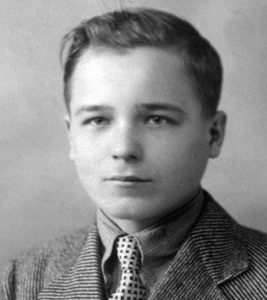
Dvořák Vladimír (*1915). Was born in Polička. Joined Baťa in August 1930, graduated the Baťa School of Work and worked as an accountant. The company sent him first to England in 1933, and in 1935 to Vienna. He left for Singapore in March 1939 as an accountant. He was evacuated to India. After the war he returned to Singapore, also lived in Thailand.
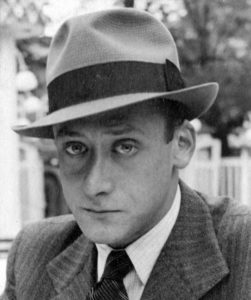 Goldmann Artur (*1911). Was born in Moravská Ostrava, joined Baťa in 1936 as a correspondent, later as a seller. Was sent to Singapore in December 1938 as a controller of samples, under Baťa’s export company Kotva. After WW2 began in Europe, he decided to return and fight; later he served as a commander of an Allied military unit. After the war, he worked for the Czechoslovak Ministry of Defense. According to a record from 1945, he changed his family name to Gonda.
Goldmann Artur (*1911). Was born in Moravská Ostrava, joined Baťa in 1936 as a correspondent, later as a seller. Was sent to Singapore in December 1938 as a controller of samples, under Baťa’s export company Kotva. After WW2 began in Europe, he decided to return and fight; later he served as a commander of an Allied military unit. After the war, he worked for the Czechoslovak Ministry of Defense. According to a record from 1945, he changed his family name to Gonda.
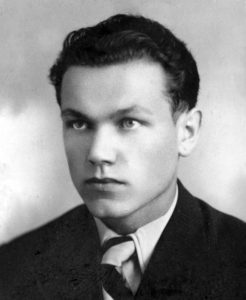
Gromnica Bedřich (*1916). Was born in Dobratice near Český Těšín, educated as a shoemaker. He joined Baťa in August 1931 and later worked as a chiropodist in Mladá Boleslav and Vítkovice. Was sent to Singapore in July 1937 as a supply manager. He successfully evacuated himself and on 27th February 1942 arrived to Australia on board of ship Marella. There he applied for citizenship in May 1950, which was granted in April 1951. He stayed in Australia and died there in 1976.
Heim Bedřich (*1909). Started to work for Baťa in August 1929 as a shop controller, was sent to New Zealand as a wholesale manager in December 1936. It is documented that in June 1940, he signed up to join the LDC in Singapore, where he served under #311. He died during an evacuation attempt in February 1942, probably on the SS Redang which was attacked and sunk by the Japanese. His wife Elsa was evacuated successfully to India on 1st February 1942 and was accommodated in the Edwinstown House in Nainital. After the war, she returned to Zlín and married another Baťa employee Kilián. The name of Bedřich Heim is engraved on the Kranji War Memorial in Singapore.
 Hlobil František (*1912). Was born in Bystřice pod Hostýnem. Joined Baťa in July 1927, after induction got a position of a head of maintenance. In August 1934 sent to the Netherlands for a year, then in May 1936 to East Tilbury in England. Departed to Batanagar, India, in November 1938, to work there as a chief machinist and instructor. Then moved to Singapore before June 1940. He joined the LDC there, served under #181. After the war lived in Batanagar and Bombay. In August 1953 recorded to be on a flight from Frankfurt to New York. Settled and lived in the USA.
Hlobil František (*1912). Was born in Bystřice pod Hostýnem. Joined Baťa in July 1927, after induction got a position of a head of maintenance. In August 1934 sent to the Netherlands for a year, then in May 1936 to East Tilbury in England. Departed to Batanagar, India, in November 1938, to work there as a chief machinist and instructor. Then moved to Singapore before June 1940. He joined the LDC there, served under #181. After the war lived in Batanagar and Bombay. In August 1953 recorded to be on a flight from Frankfurt to New York. Settled and lived in the USA.
 Hrbek Jan (*1910). Educated as a locksmith. Joined Baťa in October 1935 as a mechanist in the stocking factory. Sent to Singapore August 1938 as a director for the stockings production. During the war was listed in the Red Cross documents as POW. No further records found.
Hrbek Jan (*1910). Educated as a locksmith. Joined Baťa in October 1935 as a mechanist in the stocking factory. Sent to Singapore August 1938 as a director for the stockings production. During the war was listed in the Red Cross documents as POW. No further records found.
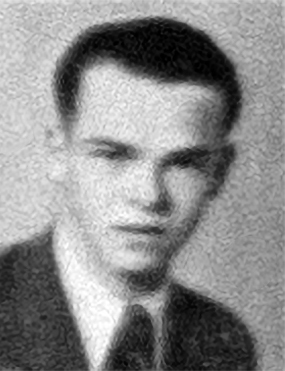 Janeček Rudolf (*1919). Educated as a shoemaker. Joined Baťa in January 1934, graduated the Baťa School of Work and worked as a seller. Left for Singapore in January 1939 as a seller-chiropodist, most likely travelled on the same ship as Silvestr Němec. They together signed enrolled in the SSVF, Janeček as Private #13778. Shortly before the war, Janeček and Němec lived together on the same address in Tiong Bahru. Janečer was captured and became POW, died in February 1945 due to beri-beri in the Labuan POW camp on Borneo. His name is engraved on the Kranji War Memorial in Singapore as well as on the War Memorial in Zlín.
Janeček Rudolf (*1919). Educated as a shoemaker. Joined Baťa in January 1934, graduated the Baťa School of Work and worked as a seller. Left for Singapore in January 1939 as a seller-chiropodist, most likely travelled on the same ship as Silvestr Němec. They together signed enrolled in the SSVF, Janeček as Private #13778. Shortly before the war, Janeček and Němec lived together on the same address in Tiong Bahru. Janečer was captured and became POW, died in February 1945 due to beri-beri in the Labuan POW camp on Borneo. His name is engraved on the Kranji War Memorial in Singapore as well as on the War Memorial in Zlín.
 Janečková Marie (*1920). Born in Všetaty. Joined Baťa in October 1934, worked in the accounting office in Zlín. Was sent to Singapore in June 1939 in the same function. Sometime between June 1940 and July 1941 she married another Baťa employee, Břetislav Sokol (see below). She evacuated from Singapore on 1st February 1942, lived in the Jubilee Grove, Nainital. After the war, both her and Břetislav worked and lived in Singapore, later in Rhodesia (today’s Zimbabwe) and eventually settled in Canada.
Janečková Marie (*1920). Born in Všetaty. Joined Baťa in October 1934, worked in the accounting office in Zlín. Was sent to Singapore in June 1939 in the same function. Sometime between June 1940 and July 1941 she married another Baťa employee, Břetislav Sokol (see below). She evacuated from Singapore on 1st February 1942, lived in the Jubilee Grove, Nainital. After the war, both her and Břetislav worked and lived in Singapore, later in Rhodesia (today’s Zimbabwe) and eventually settled in Canada.
 Jedovnický Stanislav (*1916). Was born in Ostrovánky near Kyjov. Joined Baťa in August 1931, graduated the Baťa School of Work and worked as a seller. Left for Singapore in August 1939 as an accountant. He joined the SSVF there. During the Japanese occupation, he was interned in December 1943 in the Changi Prison under number 3576, lived in cell 4.4.11. He was later, in 1944, moved to the Sime Road internment camp, where he was in the hut #114. After the liberation, he sailed in October 1945 to India for recovery. There is a record from August 1952 of him traveling along with his wife Josefa and two sons, Stanislav and Ivan, on the Dutch ship Willem Ruys from Southampton to Colombo on Ceylon; he registered „purchasing agent“ as his occupation. After several years in Indochina and India, he emigrated to Australia in 1957, where his family settled. At the time of writing the book (Ocober 2019), he had already passed, but his wife was still alive.
Jedovnický Stanislav (*1916). Was born in Ostrovánky near Kyjov. Joined Baťa in August 1931, graduated the Baťa School of Work and worked as a seller. Left for Singapore in August 1939 as an accountant. He joined the SSVF there. During the Japanese occupation, he was interned in December 1943 in the Changi Prison under number 3576, lived in cell 4.4.11. He was later, in 1944, moved to the Sime Road internment camp, where he was in the hut #114. After the liberation, he sailed in October 1945 to India for recovery. There is a record from August 1952 of him traveling along with his wife Josefa and two sons, Stanislav and Ivan, on the Dutch ship Willem Ruys from Southampton to Colombo on Ceylon; he registered „purchasing agent“ as his occupation. After several years in Indochina and India, he emigrated to Australia in 1957, where his family settled. At the time of writing the book (Ocober 2019), he had already passed, but his wife was still alive.
 Jugas Antonín (*1901). Educated as a cabinet maker. Joined Baťa in December 1923, prior to moving to Singapore in May 1938 he worked as head of a shop in Penang since 1934. His new job in Singapore was that of a head of sales department, and after the death of the Singapore director Václav Rojt in July 1941, he took over the director’s position. His wife and son were evacuated on 1st February, son Milan reached Sydney on 4th February 1942 on the board of Bontekoe, his wife arrived to India and was accommodated in Jubilee Grove, Nainital. Jugas himself was interned in December 1943 in the Changi Prison under number 3373, lived in cell 4.4.26. He was later, in 1944, moved to the Sime Road internment camp, was in the hut #114. After the war, he visited Zlín in September 1946. He continued to lead the Singapore branch of Baťa until 1962, when he retired to Australia, where he also died. His son Milan married Líba Starobová in Calcutta some time in 1950’s, they eventually settled in Sydney.
Jugas Antonín (*1901). Educated as a cabinet maker. Joined Baťa in December 1923, prior to moving to Singapore in May 1938 he worked as head of a shop in Penang since 1934. His new job in Singapore was that of a head of sales department, and after the death of the Singapore director Václav Rojt in July 1941, he took over the director’s position. His wife and son were evacuated on 1st February, son Milan reached Sydney on 4th February 1942 on the board of Bontekoe, his wife arrived to India and was accommodated in Jubilee Grove, Nainital. Jugas himself was interned in December 1943 in the Changi Prison under number 3373, lived in cell 4.4.26. He was later, in 1944, moved to the Sime Road internment camp, was in the hut #114. After the war, he visited Zlín in September 1946. He continued to lead the Singapore branch of Baťa until 1962, when he retired to Australia, where he also died. His son Milan married Líba Starobová in Calcutta some time in 1950’s, they eventually settled in Sydney.
 Koblížek František (*1915). Educated as a shoemaker. Joined Baťa in 1931, graduated the Baťa School of Work and became a seller. Left for Singapore in August 1938 as a storemaster. He joined the SSVF, where he served as a Private #12948. He managed to evacuate to India, where he married Anna Rojtová – daughter of the deceased director of Baťa Singapore, Václav Rojt – in December 1942. He lived in Batanagar after the war. There is a record from September 1952 of him, along with wife Anna and daughter Božena, on ship Carthage from Southampton to Singapore; he registered „manager of Baťa“ as his occupation. He liveed and worked in Singapore and Malaysia.
Koblížek František (*1915). Educated as a shoemaker. Joined Baťa in 1931, graduated the Baťa School of Work and became a seller. Left for Singapore in August 1938 as a storemaster. He joined the SSVF, where he served as a Private #12948. He managed to evacuate to India, where he married Anna Rojtová – daughter of the deceased director of Baťa Singapore, Václav Rojt – in December 1942. He lived in Batanagar after the war. There is a record from September 1952 of him, along with wife Anna and daughter Božena, on ship Carthage from Southampton to Singapore; he registered „manager of Baťa“ as his occupation. He liveed and worked in Singapore and Malaysia.
 Koš Viktor (*1911).Was born in Ždánice near Kyjov. Joined Baťa in February 1931 as a controller. Left to Batanagar in June 1938 as the head of the control department. His son Pavel and his wife followed him a little later. Before June 1940 they already lived in Singapore, where a daughter Jaroslava was born. Koš joined the LDC. His wife and both children were evacuated on 1st February 1942 to India on board of Empress of Japan. They were provided shelter in Petersfield School, Nainital. Koš attempted evacuation later, boarded Mata Hari that left Singapore on 12th February, but was captured by the Japanese three days later. Koš was interned in Sumatra, where he met Červinka and Zelníček – two of the survivors from SS Redang. All three were released after several weeks from the internment camp, and went on an adventurous journey through Sumatra to Medan, where they stayed for the rest of the war, with the help of the local Baťa branch. Together with Červinka, he sailed to India in October 1945 for recovery. Koš continued to work for Baťa in Singapore for several years, later moved to Baťa in London, before eventually being sent to Canada in 1963. He died there in 1995. His son Pavel lives in England, daughter Jarmila in Canada.
Koš Viktor (*1911).Was born in Ždánice near Kyjov. Joined Baťa in February 1931 as a controller. Left to Batanagar in June 1938 as the head of the control department. His son Pavel and his wife followed him a little later. Before June 1940 they already lived in Singapore, where a daughter Jaroslava was born. Koš joined the LDC. His wife and both children were evacuated on 1st February 1942 to India on board of Empress of Japan. They were provided shelter in Petersfield School, Nainital. Koš attempted evacuation later, boarded Mata Hari that left Singapore on 12th February, but was captured by the Japanese three days later. Koš was interned in Sumatra, where he met Červinka and Zelníček – two of the survivors from SS Redang. All three were released after several weeks from the internment camp, and went on an adventurous journey through Sumatra to Medan, where they stayed for the rest of the war, with the help of the local Baťa branch. Together with Červinka, he sailed to India in October 1945 for recovery. Koš continued to work for Baťa in Singapore for several years, later moved to Baťa in London, before eventually being sent to Canada in 1963. He died there in 1995. His son Pavel lives in England, daughter Jarmila in Canada.

Kožušníček Rudolf (*1910). Born in Křelov near Olomouc. Joined Baťa in October 1927, worked in its shops in Luhačovice, Olomouc and Hodonín. Upon return from his military service, in 1933, he worked as a correspondent, and was sent on a business trip to India in January 1935. Then in November 1936 sailed to Saigon as an accountant of the group of Baťa stores in Indochina. Before the war he was based in Singapore, where he joined the SSVF and served there from 1st January 1941 as Private #13774. Wounded in the battle of Singapore. During the Japanese occupation, he was interned in December 1943 in the Changi Prison under number 3374 in the cell 4.4.27. He was later, in 1944, moved to the Sime Road internment camp, was in the hut #114. There is a record from May 1947 that he and his wife Dobromila sailed on Franconia from Southampton to Bombay, from where they continued to Singapore. Worked in Singapore until 1963. In February 1964 arrived in Sydney, where he settled. He died in Australia.
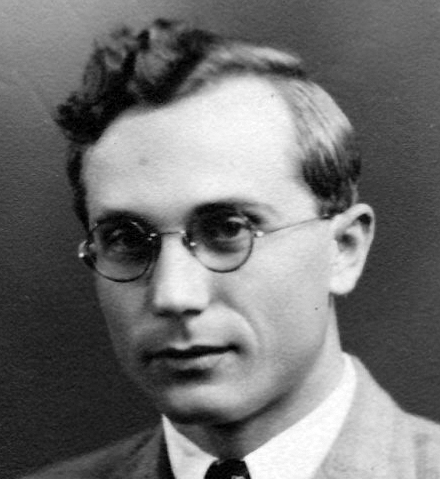 Kvapil Ladislav (*1913). He was employed by Baťa in Singapore before October 1939, when he is reported to attend the celebration of the anniversary of Czechoslovakia at the Cenotaph. He was evacuated from Singapore on 12th February 1942 aboard of MV Empire Star to Batavia (Jakarta), where he disembarked and continued on Deucalion (along with Mr and Mrs Staroba – his Baťa colleague stationed in Java at that time) to arrive in Fremantle, Australia, on the 2nd March 1942. He settled there, later changed his name to Larry Kent.
Kvapil Ladislav (*1913). He was employed by Baťa in Singapore before October 1939, when he is reported to attend the celebration of the anniversary of Czechoslovakia at the Cenotaph. He was evacuated from Singapore on 12th February 1942 aboard of MV Empire Star to Batavia (Jakarta), where he disembarked and continued on Deucalion (along with Mr and Mrs Staroba – his Baťa colleague stationed in Java at that time) to arrive in Fremantle, Australia, on the 2nd March 1942. He settled there, later changed his name to Larry Kent.

Lachs Erich (*1904). Born in Přerov. Joined Baťa in February 1932, worked as a supply manager. Sent to Singapore in December 1938 as a head of production and sales of stockings. While in Singapore, he left the company and started to work for Thomas Cook. Together with his wife and two children (son Petr and daughter Margaret) evacuated on 10th February to Durban, South Africa. From there they proceeded through the Cape Town to London. He was employed again by Baťa’s export company Kotva in Zlín in October 1945, but his contract was terminated in February 1946, supposedly because he was still engaged in some for the „competitors“. Later he lived in Maroubra, Australia.
 Lebloch Oldřich (*1914). Born in Moravský Žižkov near Hodonín. Joined Baťa as an apprentice in Augustu 1928, graduated the Baťa School of Work and two years later worked as the sales department, first as a controller of the shops and later as a seller-chiropodist in Litoměřice. Left to Hong Kong in February 1934 to become a deputy head of a shop, after that worked as a head of a warehouse storage. Returned to Czechoslovakia for his military service, following which he went back to Hong Kong in March 1938 as a regional controller. In January 1939, he moved to Philippines as a head of store in Manila. Got married there with a Philippine wife. Lived in Singapore before April 1941. During the Japanese occupation, he was interned in December 1943 in the Changi Prison under number 3375, in cell 4.4.18. He was later, in 1944, moved to the Sime Road internment camp, was in the hut #114. In October 1945 sailed to India for recovery. He applied for a British citizenship in Singapore in September 1949. There is a record of him travelling on a ship Chusan from London to Singapore in January 1951, he gave a „seller at Baťa“ as his occupation. Later he lived and died in England.
Lebloch Oldřich (*1914). Born in Moravský Žižkov near Hodonín. Joined Baťa as an apprentice in Augustu 1928, graduated the Baťa School of Work and two years later worked as the sales department, first as a controller of the shops and later as a seller-chiropodist in Litoměřice. Left to Hong Kong in February 1934 to become a deputy head of a shop, after that worked as a head of a warehouse storage. Returned to Czechoslovakia for his military service, following which he went back to Hong Kong in March 1938 as a regional controller. In January 1939, he moved to Philippines as a head of store in Manila. Got married there with a Philippine wife. Lived in Singapore before April 1941. During the Japanese occupation, he was interned in December 1943 in the Changi Prison under number 3375, in cell 4.4.18. He was later, in 1944, moved to the Sime Road internment camp, was in the hut #114. In October 1945 sailed to India for recovery. He applied for a British citizenship in Singapore in September 1949. There is a record of him travelling on a ship Chusan from London to Singapore in January 1951, he gave a „seller at Baťa“ as his occupation. Later he lived and died in England.
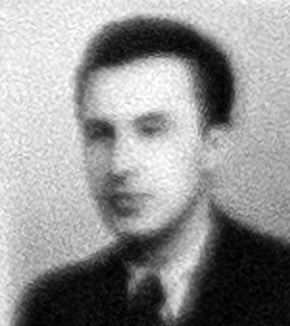 Martinec Břetislav (*1903). Educated as a miller. Joined Baťa in June 1930, before he left overseas he was a team leader in the construction department. Later dispatched to India, where he married Marie Svobodová in Calcutta in 1935. In February 1938, he was sent to Batavia (Jakarta) as a builder, at that time he had one child. Lived in Singapore before June 1940. His wife was evacuated on 1st February 1942 to India, where she got a shelter in Edwinstown House, Nainital. During the Japanese occupation, Martinec was interned in December 1943 in the Changi Prison under number 3509. He was later, in 1944, moved to the Sime Road internment camp, and placed in the hut #114. After the war, he worked for Baťa in London. He died in England.
Martinec Břetislav (*1903). Educated as a miller. Joined Baťa in June 1930, before he left overseas he was a team leader in the construction department. Later dispatched to India, where he married Marie Svobodová in Calcutta in 1935. In February 1938, he was sent to Batavia (Jakarta) as a builder, at that time he had one child. Lived in Singapore before June 1940. His wife was evacuated on 1st February 1942 to India, where she got a shelter in Edwinstown House, Nainital. During the Japanese occupation, Martinec was interned in December 1943 in the Changi Prison under number 3509. He was later, in 1944, moved to the Sime Road internment camp, and placed in the hut #114. After the war, he worked for Baťa in London. He died in England.
 Matuš Emil (*1903). Educated as a clockmaker, joined Baťa in August 1928 as a mechanist. He was sent in the same job to Batanagar in November 1936. He lived in Singapore before January 1940, joined the SSVF and served there as a Private #13781. Fought in the battle of Singapore with a machine gun. During the Japanese occupation, he was interned in December 1943 in the Changi Prison under number 3376, in cell 4.4.26. He was later, in 1944, moved to the Sime Road internment camp, and occupied the hut #114 He stayed in Malaya after the liberation and in 1960’s was director of the Baťa factory in Klang. He retired to Australia, where he died in December 1985.
Matuš Emil (*1903). Educated as a clockmaker, joined Baťa in August 1928 as a mechanist. He was sent in the same job to Batanagar in November 1936. He lived in Singapore before January 1940, joined the SSVF and served there as a Private #13781. Fought in the battle of Singapore with a machine gun. During the Japanese occupation, he was interned in December 1943 in the Changi Prison under number 3376, in cell 4.4.26. He was later, in 1944, moved to the Sime Road internment camp, and occupied the hut #114 He stayed in Malaya after the liberation and in 1960’s was director of the Baťa factory in Klang. He retired to Australia, where he died in December 1985.
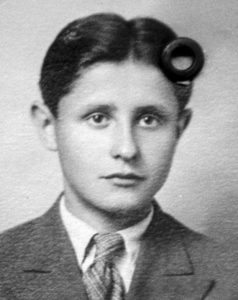 Mizia Alfred (*1914). Born in Prostřední Suchá near Fryštát na Moravě. Joined Baťa in August 1929, graduated the Baťa School of Work and from 1930 worked there as a supply manager. Moved to the Baťa flagship store on the Wenceslau Square in Prague in August 1933. Sent to Singapore as a supply manager in June 1938. He joined the SSVF there. Decided with the whole family (wife Růžena, daughter Iva *1936 and a newly born son Alfréd *March 1941) to not evacuate and stay in Singapore. They were eventually all interned in December 1943 in the Changi Prison, Mizia under number 3377 in cell 4.4.27, later moved to the Sime Road internment camp to the hut #114, then hut #30. Růžena under number 3428 and their children Alfred Raymond (3433) and Iva (3432) was at the Changi room A.2.PS. In October 1945 left to India for recovery, but then returned to Singapore where they stayed until 1950’s or later. Růžena founded and was running a kindergarten Sunny Way there. Eventually they settled in Australia.
Mizia Alfred (*1914). Born in Prostřední Suchá near Fryštát na Moravě. Joined Baťa in August 1929, graduated the Baťa School of Work and from 1930 worked there as a supply manager. Moved to the Baťa flagship store on the Wenceslau Square in Prague in August 1933. Sent to Singapore as a supply manager in June 1938. He joined the SSVF there. Decided with the whole family (wife Růžena, daughter Iva *1936 and a newly born son Alfréd *March 1941) to not evacuate and stay in Singapore. They were eventually all interned in December 1943 in the Changi Prison, Mizia under number 3377 in cell 4.4.27, later moved to the Sime Road internment camp to the hut #114, then hut #30. Růžena under number 3428 and their children Alfred Raymond (3433) and Iva (3432) was at the Changi room A.2.PS. In October 1945 left to India for recovery, but then returned to Singapore where they stayed until 1950’s or later. Růžena founded and was running a kindergarten Sunny Way there. Eventually they settled in Australia.
 Mráz Jan (*1914). Born in Mutěnice near Strakonice, educated as a knitter. Joined Baťa in May 1937 as a deputy director of a stockings workshop in Třebíč. Sent to Singapore in August 1937 as a stockings seller. He joined the SSVF in March 1938, served as a Private #12949. Like Antonín Čepka (read above), he was first attached to the Singapore Royal Engineer Volunteers (SREV), which was later reorganized; consequently, Mráz served in the Bomb Disposal Unit under the command of Charles Kinahan. During the Japanese occupation, he was interned in December 1943 in the Changi Prison under number 3378 in cell 4.4.25. He was later, in 1944, moved to the Sime Road internment camp, was in the hut #114. Following a recovery trip to India, he returned back to Czechoslovakia to his home town of Mutěnice in 1946. He then stayed in Czechoslovakia.
Mráz Jan (*1914). Born in Mutěnice near Strakonice, educated as a knitter. Joined Baťa in May 1937 as a deputy director of a stockings workshop in Třebíč. Sent to Singapore in August 1937 as a stockings seller. He joined the SSVF in March 1938, served as a Private #12949. Like Antonín Čepka (read above), he was first attached to the Singapore Royal Engineer Volunteers (SREV), which was later reorganized; consequently, Mráz served in the Bomb Disposal Unit under the command of Charles Kinahan. During the Japanese occupation, he was interned in December 1943 in the Changi Prison under number 3378 in cell 4.4.25. He was later, in 1944, moved to the Sime Road internment camp, was in the hut #114. Following a recovery trip to India, he returned back to Czechoslovakia to his home town of Mutěnice in 1946. He then stayed in Czechoslovakia.
 Myšák František (*1916). Joined Baťa in May 1932, graduated the Baťa School of Work and then worked as a seller-chiropodist. Sent to Singapore in May 1939 as an chiropodist instructor. He joined the LDC, where he served under #179. Evacuated on 11th February 1942 to India. After the war, he settled in Australia.
Myšák František (*1916). Joined Baťa in May 1932, graduated the Baťa School of Work and then worked as a seller-chiropodist. Sent to Singapore in May 1939 as an chiropodist instructor. He joined the LDC, where he served under #179. Evacuated on 11th February 1942 to India. After the war, he settled in Australia.
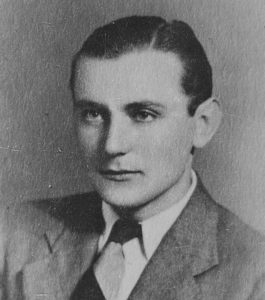 Němec Silvestr (*1919). Born in Vémyslice. Joined Baťa in September 1936 as a seller. Left for Singapore in December 1938 as a chiropodist. He joined the SSVF and served there as a Private #13779. He saw action in the Battle of Singapore, was injured on 11th February 1942 and gone missing before 15th February 1942, last seen in the Pasir Panjang battle. He was declared dead by authorities in July 1947. His name is engraved on the Kranji War Memorial in Singapore, on the War Memorial in Zlín, as well as on a memorial in his hometown.
Němec Silvestr (*1919). Born in Vémyslice. Joined Baťa in September 1936 as a seller. Left for Singapore in December 1938 as a chiropodist. He joined the SSVF and served there as a Private #13779. He saw action in the Battle of Singapore, was injured on 11th February 1942 and gone missing before 15th February 1942, last seen in the Pasir Panjang battle. He was declared dead by authorities in July 1947. His name is engraved on the Kranji War Memorial in Singapore, on the War Memorial in Zlín, as well as on a memorial in his hometown.
 Plhoň Klement (*1890). Born in Bořitov near Černá Hora. Educated as a shoemaker. Joined Baťa in August 1925, before going overseas worked as a head of supply. Left for Singapore in August 1939 as a production organizer. Joined the LDC, where he served under #344. His wife and son Zdeněk were evacuated to India on 1st February 1942. Plhoň attempted to evacuate on board of SS Redang which was attacked and sunk by the Japanese on 12th February 1942. He did not survive. His name is engraved on the Kranji War Memorial in Singapore and on the War Memorial in Zlín.
Plhoň Klement (*1890). Born in Bořitov near Černá Hora. Educated as a shoemaker. Joined Baťa in August 1925, before going overseas worked as a head of supply. Left for Singapore in August 1939 as a production organizer. Joined the LDC, where he served under #344. His wife and son Zdeněk were evacuated to India on 1st February 1942. Plhoň attempted to evacuate on board of SS Redang which was attacked and sunk by the Japanese on 12th February 1942. He did not survive. His name is engraved on the Kranji War Memorial in Singapore and on the War Memorial in Zlín.

Pospíšil Karel (*1910). Born in Přerov, educated as a seller. Joined Baťa in March 1934 as an arranged in the shop in Přerov. Left for Singapore in the same role in April 1938, but later became a manager on the rubber plantation. During the Japanese occupation, he was interned under the number 3363 in the Sime Road internment camp hut #114. His wife Jarmila and daughter Alena were evacuated on 1st February 1942 to India, where they were provided an asylum in Nainital. After the war, Karel again worked on the Baťa rubber tree plantation at Bukit Tiga (Johore), and applied for a British citizenship in Malaya in July 1950. He later lived in England.
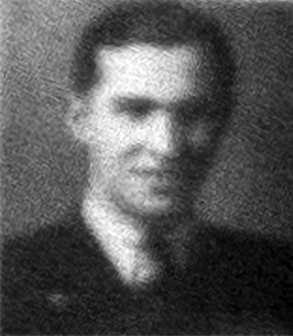 Řehoř František (*1920). Educated as a seller. Joined Baťa in 1935 in that profession. Sent to Singapore in December 1938 as a seller-chiropodist. He had major conflicts with the director Rojt. After the WW2 began in Europe, he travelled back and joined the Czechoslovak legions in France, later served as pilot at R.A.F., squadron 310. Went missing during a mission at the end of August 1944, probably was shot down above the Channel. His name is engraved on the War Memorial in Zlín.
Řehoř František (*1920). Educated as a seller. Joined Baťa in 1935 in that profession. Sent to Singapore in December 1938 as a seller-chiropodist. He had major conflicts with the director Rojt. After the WW2 began in Europe, he travelled back and joined the Czechoslovak legions in France, later served as pilot at R.A.F., squadron 310. Went missing during a mission at the end of August 1944, probably was shot down above the Channel. His name is engraved on the War Memorial in Zlín.
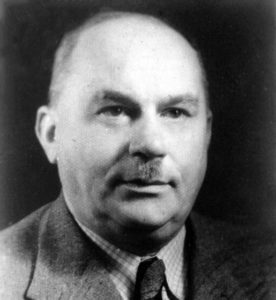
Rojt Václav (*1885). Born in Domažlice. He became a head of the planning department at Bata already in 1910, during the WW1 was overseeing the production of the whole factory in Zlín. In 1930’s, he was helping the company to expand at oversea markets, and was eventually appointed as a director of the Singapore branch in April 1939. He died in July 1941, was buried at the Bidadari cemetery. His daughter Anna (* 1916) was evacuated to India on 1st February 1942, was provided a shelter in Nainital. Married to František Koblížek (read above) in December 1942 at the Batanagar Chappel of St. Wenceslau. Their daughter Božena still lives in Australia.
 Šebová Vlasta (*1920). Joined Baťa in 1934, graduated the Baťa School of Work and later worked as a chiropodist. Sent to Singapore in May 1939 in the same position. In April 1941, she married George Tarry. She was evacuated on 1st February 1942 to India, but continued to London. Her husband George attempted evacuation on Giang Bee, survived its sinking on 13th February 1942, and was picked up by HMS Tapah which was later captured by the Japanese. He was interned in Palembang in Sumatra, later in the Changi Prison in Singapore. George travelled to England after liberation in October 1945 on board of Sobieski. They both returned to Singapore in 1946, George died there in November 1947 because of a heart attack.
Šebová Vlasta (*1920). Joined Baťa in 1934, graduated the Baťa School of Work and later worked as a chiropodist. Sent to Singapore in May 1939 in the same position. In April 1941, she married George Tarry. She was evacuated on 1st February 1942 to India, but continued to London. Her husband George attempted evacuation on Giang Bee, survived its sinking on 13th February 1942, and was picked up by HMS Tapah which was later captured by the Japanese. He was interned in Palembang in Sumatra, later in the Changi Prison in Singapore. George travelled to England after liberation in October 1945 on board of Sobieski. They both returned to Singapore in 1946, George died there in November 1947 because of a heart attack.
 Smržák Oldřich (*1913). Born in Uhřice in central Moravia. Joined Baťa in August 1927, graduated the Baťa School of Work. Worked as a handler before departure to Singapore in August 1938. His new job there was a head of shoe production. He died together with several other colleagues during an attempted evacuation on board of SS Redang, which was sunk on 12th February 1942. His wife Miroslava and daughter Oldřiška were successfully evacuated already on 1st February 1942 and arrived in India, where they were provided an asylum in Petersfield School, Nainital. Widowed Miroslava re-married to a Batanagar based Baťa employee Rudolf Šícha. They later emigrated to Australia, where in 1962 applied for citizenship – at that time, they had sons George Charles and Rudolf. The name of Smržák is engraved on the Kranji War Memorial in Singapore (misspelled as „Smrzakova O.“) and on the War Memorial in Zlín.
Smržák Oldřich (*1913). Born in Uhřice in central Moravia. Joined Baťa in August 1927, graduated the Baťa School of Work. Worked as a handler before departure to Singapore in August 1938. His new job there was a head of shoe production. He died together with several other colleagues during an attempted evacuation on board of SS Redang, which was sunk on 12th February 1942. His wife Miroslava and daughter Oldřiška were successfully evacuated already on 1st February 1942 and arrived in India, where they were provided an asylum in Petersfield School, Nainital. Widowed Miroslava re-married to a Batanagar based Baťa employee Rudolf Šícha. They later emigrated to Australia, where in 1962 applied for citizenship – at that time, they had sons George Charles and Rudolf. The name of Smržák is engraved on the Kranji War Memorial in Singapore (misspelled as „Smrzakova O.“) and on the War Memorial in Zlín.
 Sokol Břetislav (*1910). Born in Chlumec nad Cidlinou, educated as a merchant. Joined Baťa in March 1927 as a worker in the rubber factory. From November 1933 to January 1936 stationed in the Baťa factory in East Tilbury. Left for Batanagar in August 1937 as an instructor, from May 1939 worked as a leader in the company’s factory in Klang, Malaya. Married his colleague Marie Janečková (see above) before war. Was interned in in December 1943 the Changi Prison under number 3577 in a cell 4.4.11. He was later, in 1944, moved to the Sime Road internment camp, where he was placed in the hut #114. After the war, both him and Marie worked and lived in Singapore, later in Rhodesia (today’s Zimbabwe) and eventually settled in Canada. This is where Břetislav also died.
Sokol Břetislav (*1910). Born in Chlumec nad Cidlinou, educated as a merchant. Joined Baťa in March 1927 as a worker in the rubber factory. From November 1933 to January 1936 stationed in the Baťa factory in East Tilbury. Left for Batanagar in August 1937 as an instructor, from May 1939 worked as a leader in the company’s factory in Klang, Malaya. Married his colleague Marie Janečková (see above) before war. Was interned in in December 1943 the Changi Prison under number 3577 in a cell 4.4.11. He was later, in 1944, moved to the Sime Road internment camp, where he was placed in the hut #114. After the war, both him and Marie worked and lived in Singapore, later in Rhodesia (today’s Zimbabwe) and eventually settled in Canada. This is where Břetislav also died.
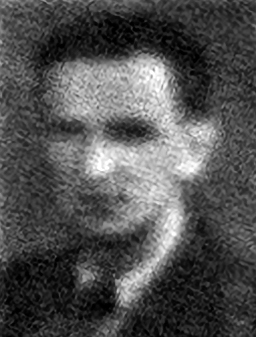 Soural Jan (*1914). Joined Baťa in April 1932, graduated the Baťa School of Work and worked as a chiropodist. Left for Singapore in May 1939 to become a deputy head of a shop. Successfully evacuated to India, where he worked for Baťa in Batapur (today’s Pakistan). After the war, he returned to Singapore; also is recorded to work East Tilbury, where he was granted British citizenship. There is a record of him and his wife Elaine and daughter Růžena travelling on Strathedem from London to Brisbane in July 1955. He died in 1991 in Bristol.
Soural Jan (*1914). Joined Baťa in April 1932, graduated the Baťa School of Work and worked as a chiropodist. Left for Singapore in May 1939 to become a deputy head of a shop. Successfully evacuated to India, where he worked for Baťa in Batapur (today’s Pakistan). After the war, he returned to Singapore; also is recorded to work East Tilbury, where he was granted British citizenship. There is a record of him and his wife Elaine and daughter Růžena travelling on Strathedem from London to Brisbane in July 1955. He died in 1991 in Bristol.
 Štásek Josef (*1913). Educated as a butcher, joined Baťa in 1931 as a seller. Sent to Singapore in April 1937 to become a head of the central warehouse. He joined the SSVF, where he served as a Private #12947. Died before the war after he contracted a typhus in Siagon in 1941.
Štásek Josef (*1913). Educated as a butcher, joined Baťa in 1931 as a seller. Sent to Singapore in April 1937 to become a head of the central warehouse. He joined the SSVF, where he served as a Private #12947. Died before the war after he contracted a typhus in Siagon in 1941.
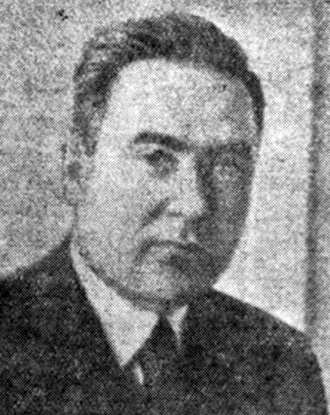 Strangfeld Josef (*1904). Educated as a cabinet maker. Joined Baťa in July 1927, he progressed in the hierarchy to become a chief of supplies in the Zlín factory and subsequently a director of a factory in France. In 1935, he became a head of the Dům služeb („House of Services“) of Baťa in Prague – the most prestigious company store in the world. He left for Singapore in November 1937 as a sales organizer. He died while attempting an evacuation on board of SS Redang, which was sunk by the Japanese on 12th February 1942. His wife Anastázie successfully evacuated to India on 1st February, was accommodated in the Edwinstown House, Nainital. His name is engraved on the Kranji War Memorial in Sinagpore and on the War Memorial in Zlín.
Strangfeld Josef (*1904). Educated as a cabinet maker. Joined Baťa in July 1927, he progressed in the hierarchy to become a chief of supplies in the Zlín factory and subsequently a director of a factory in France. In 1935, he became a head of the Dům služeb („House of Services“) of Baťa in Prague – the most prestigious company store in the world. He left for Singapore in November 1937 as a sales organizer. He died while attempting an evacuation on board of SS Redang, which was sunk by the Japanese on 12th February 1942. His wife Anastázie successfully evacuated to India on 1st February, was accommodated in the Edwinstown House, Nainital. His name is engraved on the Kranji War Memorial in Sinagpore and on the War Memorial in Zlín.
 Straussler Eugen (*1908). Born in Podmokly near Děčín. Studied medicine at the university and in 1932 got a job as an external doctor at the Baťa Hospital in Zlín. Depated to Singapore in April 1939 with his wife Marta and sons Petr and Tomáš (he later became famous as a playwrite and screenwriter Tom Stoppard). Eugen died during attempted evacuation, probably on the board of SS Redang on 12th February 1942. His family was evacuated to India on 1st February and got a shelter in the Petersfield School, Nainital. His wife Marie then managed a Baťa shop in Darjeeling. After the war, she re-married to a British officer Kenneth Stoppard and they all resettled in England. Eugen’s name is engraved on the Kranji War Memorial in Singapore.
Straussler Eugen (*1908). Born in Podmokly near Děčín. Studied medicine at the university and in 1932 got a job as an external doctor at the Baťa Hospital in Zlín. Depated to Singapore in April 1939 with his wife Marta and sons Petr and Tomáš (he later became famous as a playwrite and screenwriter Tom Stoppard). Eugen died during attempted evacuation, probably on the board of SS Redang on 12th February 1942. His family was evacuated to India on 1st February and got a shelter in the Petersfield School, Nainital. His wife Marie then managed a Baťa shop in Darjeeling. After the war, she re-married to a British officer Kenneth Stoppard and they all resettled in England. Eugen’s name is engraved on the Kranji War Memorial in Singapore.
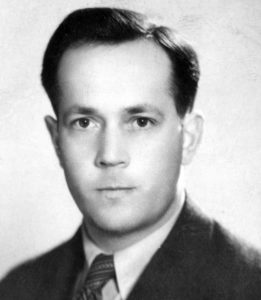 Vaněk Alois (*1905). Born in Osek near Lipník nad Bečvou, educated as a tailor. Joined Baťa in September 1924 as a factory worker, later was promoted to work in the procurement department. Left for Singapore as a purchasing agent in January 1939, together with his wife Františka who worked in the accounting team at Baťa for thee years, and their child. He got into conflicts with the management and left the company while in Singapore, after that he worked as an independent businessman. During the chaotic evacuation, his wife and child departed on 6th February for India, while Vaněk arrived on the ship Gorgon to Fremantle in Australia on 20th February 1942. He managed to obtain a visa to India and reojoin his family; later his another child was born there. He got a job with Baťa in India. He applied in December 1943 to join the Czechoslovak international army, but was turned down on the grounds of health problems and the need to care about his wife. After the war, they returned to Czechoslovakia. Worked at Baťa in Zlín from May 1946 to 1948, after that was moved to work for its branch Exica in Bratislava. Remained with his family living in Czechoslovakia.
Vaněk Alois (*1905). Born in Osek near Lipník nad Bečvou, educated as a tailor. Joined Baťa in September 1924 as a factory worker, later was promoted to work in the procurement department. Left for Singapore as a purchasing agent in January 1939, together with his wife Františka who worked in the accounting team at Baťa for thee years, and their child. He got into conflicts with the management and left the company while in Singapore, after that he worked as an independent businessman. During the chaotic evacuation, his wife and child departed on 6th February for India, while Vaněk arrived on the ship Gorgon to Fremantle in Australia on 20th February 1942. He managed to obtain a visa to India and reojoin his family; later his another child was born there. He got a job with Baťa in India. He applied in December 1943 to join the Czechoslovak international army, but was turned down on the grounds of health problems and the need to care about his wife. After the war, they returned to Czechoslovakia. Worked at Baťa in Zlín from May 1946 to 1948, after that was moved to work for its branch Exica in Bratislava. Remained with his family living in Czechoslovakia.

Varmuža Josef (*1912). Born in Olomouc, educated as a merchant. Joined Baťa in May 1937 as an arranger at the advertising department. Left for Singapore in August 1939 in the position of an advertising manager. During the Japanese occupation, he was interned in December 1943 in the Changi Prison under number 3382 in the cell 4.4.27. He was later, in 1944, moved to the Sime Road internment camp, where he was placed in the hut #114, then hut #30. After the liberation, he sailed in October 1945 to India for recovery. In February 1950 he applied for a British citizenship in Singapore. During 1960’s worked as a sales director in Klang. Retired to Canada, where he died in 2000.
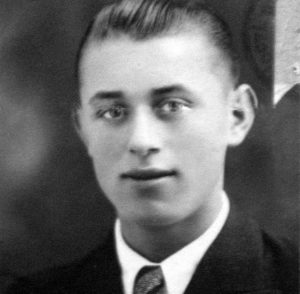 Vašica Jan (*1912). Bron from Jasená near Zlín. Joined Baťa in July 1927, graduated the Baťa School of Work. Later worked in the warehouse and in procurement. Left for Singapore in August 1939 to help with procurement, worked in the department under Jaroslav Adamík. His wife Božena and daughter (also Božena) were evacuated to India on 1st February 1942. Lived in Bombay during the war. In 1947, Vašica participated in the rally of Sokol association in Zlín. He later settled in the USA.
Vašica Jan (*1912). Bron from Jasená near Zlín. Joined Baťa in July 1927, graduated the Baťa School of Work. Later worked in the warehouse and in procurement. Left for Singapore in August 1939 to help with procurement, worked in the department under Jaroslav Adamík. His wife Božena and daughter (also Božena) were evacuated to India on 1st February 1942. Lived in Bombay during the war. In 1947, Vašica participated in the rally of Sokol association in Zlín. He later settled in the USA.
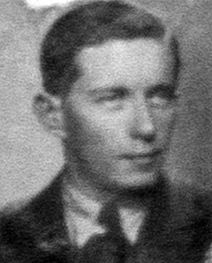 Vítek Karel (*1912). Joined Baťa in August 1929, graduated the Baťa School of Work and worked as an accountant. In the same position sent to Singapore in August 1939. Together with Silvestr Němec and Rudolf Janeček joined the SSVF, he served there as a Private #13777. He was wounded in an action and captured by the Japanese. He died of malaria and beri-beri in the POW camp Labuan on Borneo in March 1945. His name is engraved on the Kranji War Memorial and on the War Memorial in Zlín.
Vítek Karel (*1912). Joined Baťa in August 1929, graduated the Baťa School of Work and worked as an accountant. In the same position sent to Singapore in August 1939. Together with Silvestr Němec and Rudolf Janeček joined the SSVF, he served there as a Private #13777. He was wounded in an action and captured by the Japanese. He died of malaria and beri-beri in the POW camp Labuan on Borneo in March 1945. His name is engraved on the Kranji War Memorial and on the War Memorial in Zlín.
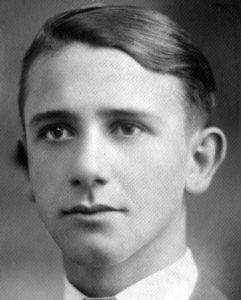 Vrla Ladislav (*1911). Born in Kvítkovice near Uherské Hradiště, later lived in Napajedla. Joined Baťa in 1926, graduated the Baťa School of Work and worked as a factory worker, later as a supplier. In this position sent to Singapore in August 1939. His wife Marie, who worked at Baťa as a tailor since 1926, was evacuated to India on 6th February 1942. Vrla also managed to escape there, and in June 1943 in Calcutta signed up for the Czechoslovak international army. While in India, he quit the Baťa company in January 1944 and started to work in Lahore for another Czech factory Janda that was providing supplies to the army. After the war, he lived in Dakar (Senegal) and later settled in Australia.
Vrla Ladislav (*1911). Born in Kvítkovice near Uherské Hradiště, later lived in Napajedla. Joined Baťa in 1926, graduated the Baťa School of Work and worked as a factory worker, later as a supplier. In this position sent to Singapore in August 1939. His wife Marie, who worked at Baťa as a tailor since 1926, was evacuated to India on 6th February 1942. Vrla also managed to escape there, and in June 1943 in Calcutta signed up for the Czechoslovak international army. While in India, he quit the Baťa company in January 1944 and started to work in Lahore for another Czech factory Janda that was providing supplies to the army. After the war, he lived in Dakar (Senegal) and later settled in Australia.
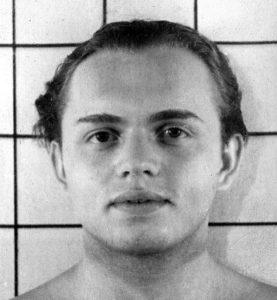 Vyhnálek Josef (*1917). Born in Nekoř near Jamné nad Orlicí. Joined Baťa in September 1931, graduated the Baťa School of Work and then worked in a factory, later as a supply organizer and regional controller of the shops. In the years 1934-1937 worked as a seller-chiropodist in the shops in Zlín, Louny, Mělník, Brno and Mladá Boleslav. He left for Singapore in May 1939 in the same position, before he was promoted as a deputy head of the Baťa flagship store on the North Bridge Road. He joined SSVF where he served as Private #13797. Fought in the battle and was captured by the Japanese on 13th February 1942 in the area of Pasir Panjang. As a POW, he was sent to work camps in Burma and on Borneo. After liberation, he travelled first to London at the end of 1945, and then decided to return to Zlín where he was re-emplyoed in March 1946 and worked in its branch Exica in Bratislava. He stayed in Czechoslovakia.
Vyhnálek Josef (*1917). Born in Nekoř near Jamné nad Orlicí. Joined Baťa in September 1931, graduated the Baťa School of Work and then worked in a factory, later as a supply organizer and regional controller of the shops. In the years 1934-1937 worked as a seller-chiropodist in the shops in Zlín, Louny, Mělník, Brno and Mladá Boleslav. He left for Singapore in May 1939 in the same position, before he was promoted as a deputy head of the Baťa flagship store on the North Bridge Road. He joined SSVF where he served as Private #13797. Fought in the battle and was captured by the Japanese on 13th February 1942 in the area of Pasir Panjang. As a POW, he was sent to work camps in Burma and on Borneo. After liberation, he travelled first to London at the end of 1945, and then decided to return to Zlín where he was re-emplyoed in March 1946 and worked in its branch Exica in Bratislava. He stayed in Czechoslovakia.
 Vytopil Karel (*1910). Was born in Brno. Worked for Baťa in 1927-1930 as a seasonal worker, before he got a permanent job in September 1934 as a regional controler of the shops. Left for India in 1935 and in September 1939 was sent to Singapore as the director of the sales department. When the war in the Pacific started, he was with his wife Júlie and three children in Batavia, where they lived until the war was over. He later worked for Baťa in India again in 1946, later in East Tilbury (1953), Gweru in Zimbabwe (1954) and in 1960’s in US and Canada. He retired to Sydney, where his family is still living nowadays.
Vytopil Karel (*1910). Was born in Brno. Worked for Baťa in 1927-1930 as a seasonal worker, before he got a permanent job in September 1934 as a regional controler of the shops. Left for India in 1935 and in September 1939 was sent to Singapore as the director of the sales department. When the war in the Pacific started, he was with his wife Júlie and three children in Batavia, where they lived until the war was over. He later worked for Baťa in India again in 1946, later in East Tilbury (1953), Gweru in Zimbabwe (1954) and in 1960’s in US and Canada. He retired to Sydney, where his family is still living nowadays.
 Wakerman František (*1921). His original surname was Blažek, but he changed it to Wakerman in 1930’s. Joined Baťa in September 1936 as a seller-chiropodist. In this function he also left for Singapore in December 1938, in the same group as Silvestr Němec and several others. He was however relocated to Klang, where he joined the LDC. After retreating to Singapore, as the Japanese were advancing south through Malaya, he was helping the police forces as a volunteer – few days before the capitulation he captured a Japanese spy near Bukit Timah. He managed to evacuate himself on 13th February 1942 to Batavia (Jakarta) and then continued via Ceylon to India. There he joined the British Army and was attached to the Berkshire Regiment, where he served for two years, after which he entered the Military Academy. Consequently was with the Sussex Regiment in Madras (Chennai). Participated in fightings in Burma and liberation of Malaya, was promoted to a rank of a captain. After the war he worked in Penang and later settled in Singapore, where he married a local wife Daisy. They have four children.
Wakerman František (*1921). His original surname was Blažek, but he changed it to Wakerman in 1930’s. Joined Baťa in September 1936 as a seller-chiropodist. In this function he also left for Singapore in December 1938, in the same group as Silvestr Němec and several others. He was however relocated to Klang, where he joined the LDC. After retreating to Singapore, as the Japanese were advancing south through Malaya, he was helping the police forces as a volunteer – few days before the capitulation he captured a Japanese spy near Bukit Timah. He managed to evacuate himself on 13th February 1942 to Batavia (Jakarta) and then continued via Ceylon to India. There he joined the British Army and was attached to the Berkshire Regiment, where he served for two years, after which he entered the Military Academy. Consequently was with the Sussex Regiment in Madras (Chennai). Participated in fightings in Burma and liberation of Malaya, was promoted to a rank of a captain. After the war he worked in Penang and later settled in Singapore, where he married a local wife Daisy. They have four children.
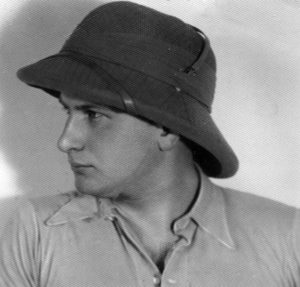 Zamara Vilém (Wilhelm) (*1909). Born in Vienna, but grew up with parents in Kopisty near Most. Joined Baťa in February 1932 as a correspondent. Later worked in shops in Dubí as well as abroad (Germany and Algeria). Left for Singapore in March 1938 as a head of the sampling department. Joined the SSVF before August 1938, served as a Private #13019 (some other sources say #13901). He quit the company and worked as a sales representative for various companies, including Remington typewriters. He was captured in Kuala Lumpur and interned in the Sime Road under number 3664, hut #114. After the liberation, he travelled to England in October 1945 and continued to Czechoslovakia. In February 1946, he was re-employed by Baťa in its export company Kotva, and then was sent to Singapore again in December 1946. A year later, he quit the company again. Applied for British citizenship in Singapore in summer 1948. Died in Canada.
Zamara Vilém (Wilhelm) (*1909). Born in Vienna, but grew up with parents in Kopisty near Most. Joined Baťa in February 1932 as a correspondent. Later worked in shops in Dubí as well as abroad (Germany and Algeria). Left for Singapore in March 1938 as a head of the sampling department. Joined the SSVF before August 1938, served as a Private #13019 (some other sources say #13901). He quit the company and worked as a sales representative for various companies, including Remington typewriters. He was captured in Kuala Lumpur and interned in the Sime Road under number 3664, hut #114. After the liberation, he travelled to England in October 1945 and continued to Czechoslovakia. In February 1946, he was re-employed by Baťa in its export company Kotva, and then was sent to Singapore again in December 1946. A year later, he quit the company again. Applied for British citizenship in Singapore in summer 1948. Died in Canada.
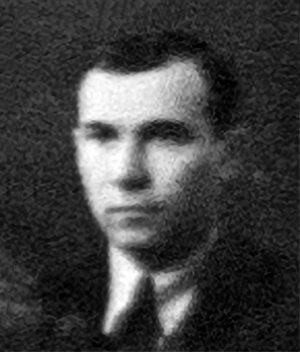 Zapalač Jaroslav (*1911). Joined the Baťa company in July 1930, worked as a supply manager. In that position was sent to Singapore in December 1938 – travelled in the same group as Silvestr Němec. When the war started in the Pacific, he was based in Batavia (Jakarta), from where he evacuated on Marella and on 27th February 1942 arrived to Fremantle, Australia. In 1945 lived in Melbourne, but it seems he eventually settled in Malaysia.
Zapalač Jaroslav (*1911). Joined the Baťa company in July 1930, worked as a supply manager. In that position was sent to Singapore in December 1938 – travelled in the same group as Silvestr Němec. When the war started in the Pacific, he was based in Batavia (Jakarta), from where he evacuated on Marella and on 27th February 1942 arrived to Fremantle, Australia. In 1945 lived in Melbourne, but it seems he eventually settled in Malaysia.

Zelníček Vladimír (*1912). Joined Baťa in July 1926. Left for Singapore in January 1939 as a purchaser, probably on the same ship as Silvestr Němec. From May 1941 served with the volunteer force in Penang. He attempted evacuation on SS Redang which was sunk on 12th February 1942. Zelníček survived, was captured and interned in Sumatra. There he met Viktor Koš (see above) and joined him in the journey to Medan, where he stayed for the rest of the war. Died in 1988.
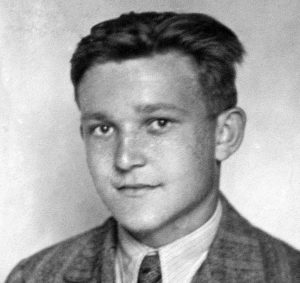 Zuna Josef (*1921). Born in Prievidza, grew up in Ostřešany near Pardubice. Joined Baťa in September 1935 as a factory worker, graduated the Baťa School of Work and in June 1938 attended a course to become a seller. Sent to Singapore in December 1938 as a chiropodist, travelled there on the same ship as Silvestr Němec. After the war started in Europe, he returned to France and later to England, where he joined the British army, earning the rank of sergeant-major. From October 1946 worked for Baťa again, at the Kotva export company in Zlín. He travelled to Singapore again in November 1947, but in 1948 was back in Zlín. He quit the company at the end of 1950.
Zuna Josef (*1921). Born in Prievidza, grew up in Ostřešany near Pardubice. Joined Baťa in September 1935 as a factory worker, graduated the Baťa School of Work and in June 1938 attended a course to become a seller. Sent to Singapore in December 1938 as a chiropodist, travelled there on the same ship as Silvestr Němec. After the war started in Europe, he returned to France and later to England, where he joined the British army, earning the rank of sergeant-major. From October 1946 worked for Baťa again, at the Kotva export company in Zlín. He travelled to Singapore again in November 1947, but in 1948 was back in Zlín. He quit the company at the end of 1950.
Other Czechoslovaks
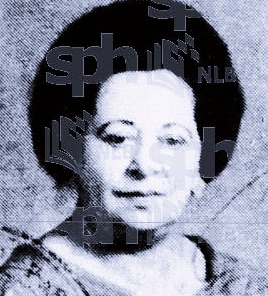
Apelbaum David (*1904). Lived in Kuala Lumpur as a musician, together with his wife Jarmila (*1905) and son Jiří (born in March 1938). As the Japanese were advancing down the Malayan peninsula, they evacuated to Singapore. David was then working as a musician in the Selangor Club, and performed in concerts also in the early period of the Japanese occupation. There they were later interned in the Changi Prison under numbers 3366 (David, in cell 4.4.29), 3411 (Jarmila, in room A.2.PS) and 3431 (Jiří, in room A.2.PS). When they were later moved to the Sime Road internment camp, David lived in the hut #44. After the war, David was granted a British citizenship in 1952 and changed his surname to „Apel“. He continued to live as a musician in Singapore. He died in 1967 during a holiday visit to Prague – his body was transported to Singapore and he was buried at the Jewish Cemetery on the Thomson Road. Jarmila died in Singapore in 1985. Their son Jiri / George was living in London at that time, and their daughter Ludmila (probably born after the war) in Singapore.
Bachratý Štěpán (*1916). Was in Singapore as a roman-catholic missioner and a teacher. Interned in December 1943 in Changi under number 3367 in the cell 4.4.19, later in the Sime Road internment camp hut #114.
Berg Pavel (*1908). Born in Vienna. Salesman, married. Evacuated on 11th February, reached Fremantle in Australia on 20th February on board of Gorgon. Settled in Melbourne. His wife Marie Josefa (* 1909, Brno) was staying in Czechoslovakia during the war, but later rejoined him in Australia. He was granted Australian citizenship in November 1948.
Eisinger Pavel (*1876). Worked in Kuala Lumpur as an a motor engineer. Was captured there and interned in the Changi Prison under number 3371, recorded to have been in the hospital facility (4. Hosp) for some time, later in the Sime Road internment camp hut #35.
Getreuer Pavel (*1908). Salesman at the Optorg & Co., marrieed. Together with his wife Stella, who worked as a doctor, was interned in the Changi Prison under numbers 3372 (Pavel, cell 4.4.28, later in Sime Road hut #114) and 1824 (Stella, room A.2.PS). They remained in Singapore after the war. Pavel joined the Optorg company again in 1946, and worked for some time as a Deputy Consul in Greece. His name is still mentioned in the Singaporean press in 1968. Stella died in Singapore in July 1957.
Chalemová Margaret (*1916). Housewife. Was captured in the Cameron Highlands, Malaya, and interned in the Changi Prison under number 3665 in room A.2.PS.
Kinský Vojtěch. Together with wife and two children evacuated to Australina on 10th February 1942. Lived in Sydney.
 Kočí Bohuslav (*1889). Artist and sculptor. Fought in the WW1, was captured in Brody near Lvov. Joined the Czechoslovak Legions in Russia in October 1918. Author of the sculpture of the unknown soldier in Vladivostok. In 1920 he settled in China, where he authored many sculptures and other pieces of art – most famous is the statue of Sun Yat Sen in his mausoleum Nanking. From October 1937 lived in Malaya, and eventually in Singapore. Died in February 1942 during an attempt to evacuate on one of the ships.
Kočí Bohuslav (*1889). Artist and sculptor. Fought in the WW1, was captured in Brody near Lvov. Joined the Czechoslovak Legions in Russia in October 1918. Author of the sculpture of the unknown soldier in Vladivostok. In 1920 he settled in China, where he authored many sculptures and other pieces of art – most famous is the statue of Sun Yat Sen in his mausoleum Nanking. From October 1937 lived in Malaya, and eventually in Singapore. Died in February 1942 during an attempt to evacuate on one of the ships.
Luley Josef (*1897). Born in Příbor, graduated a business academy in Prague. Since August 1921, he worked for the Czechoslovak Ministery of Foreign Affairs. Served as a clerk in the embassy in Budapest, later in Albania and after December 1929 in higher positions at the Czechoslovak consulates in Calcutta and Bombay. He was sent to Singapore from India in March 1941 as a consulary agent, was accommodated in the Raffles Hotel. Evacuated on 6th February 1942 to India, where his wife and daugther lived. Later during the war served as a diplomat in the Cape Town (May 1942 – February 1943) and Jerusalem (March 1943 – April 1946). He was dismissed from the ministery in 1949, retired in 1950.
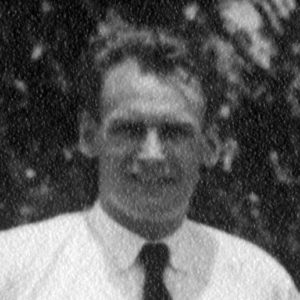 Marischler Emil (*1905). Born in Přerov, graduated a business academy. At the beginning of 1930’s worked for Baťa, sailed to the Far East in December 1932 on the legendary voyage of Baťa’s ship Morava. Worked in the company’s branch in Batavia, but soon moved to Singapore. He quit after conflicts with the management and later worked in Singapore as an independent businessman. In March 1941 signed up to the Czechoslovak international army, but eventually did not join it. His wife Ludmila (*1906, Přerov) and daugther Marcela (*1936) were evacuated on 6th February 1942 to India, while Marischler arrived on Wang Pu to Fremantle, Australia, on 1st March 1942. His wife and daughter followed him there in November 1942 on board of Dominion. In 1950, the family travelled from Bombay to Fremantle on the ship Strathmore. He was granted Australian citizenship in 1959. Died in California in 1982.
Marischler Emil (*1905). Born in Přerov, graduated a business academy. At the beginning of 1930’s worked for Baťa, sailed to the Far East in December 1932 on the legendary voyage of Baťa’s ship Morava. Worked in the company’s branch in Batavia, but soon moved to Singapore. He quit after conflicts with the management and later worked in Singapore as an independent businessman. In March 1941 signed up to the Czechoslovak international army, but eventually did not join it. His wife Ludmila (*1906, Přerov) and daugther Marcela (*1936) were evacuated on 6th February 1942 to India, while Marischler arrived on Wang Pu to Fremantle, Australia, on 1st March 1942. His wife and daughter followed him there in November 1942 on board of Dominion. In 1950, the family travelled from Bombay to Fremantle on the ship Strathmore. He was granted Australian citizenship in 1959. Died in California in 1982.
Mense Osvald (*1881). Born in Uherské Hradiště. In Singapore worked as an engineer. Togeher with his wife Elsa (*1886, Vienna) evacuated on 6th February 1942. Arrived to Melbourne on 30th March 1942 on board of Tanda. Their son had Austrian nationality and was therefore interned in Tatura, Australia. In 1946, Mense was granted Australian citizenship.
Milner N. Worked for the company Far East Ox. And Aceth Ltd.
Muhlbergová Josefina (*1864). Czechoslovak of German origin. Her later fate remains unknown.
Muhlstein Rudolf. Worked for Far East Ox. And Aceth Ltd. Together with his wife Gertruda were evacuated on 6th February 1942 to India. In March 1947 they travelled on Madura from Calcultta to Melbourne.
Neuman Pavel. Employee of the Human Pipe Ltd. His wife and two children were evacuated on 6th February 1942 to India. No further information available.
Paronová Pavlina (*1933). School pupil, captured in the Cameron Highlands, Malaya (possibly attending the Tanglin Boarding School there) and interned in the Changi Prison under number 3666.
Paronová Simona (*1932). Student, captured in the Cameron Highlands, Malaya (possibly attending the Tanglin Boarding School there) and interned in the Changi Prison under number 3667.
Reiser Rudolf. Sent to Singapore in 1935 by the Çzechoslovak state company Export Instituton. Soon after he became independent and became a sales representative of a number of private companies. He spoke Czech with a German accent. He cooperated with the Security Control Office as a confidant in the matters of Czechoslovak citizens. When the war started, he accepted an offer to become a censor working for the British government. He later passed that function on to Erich Wodak, director of the Škoda company in Singapore. His wife was evacuated on 6th February to India, Reiser followed her on 11th February. Their two sons were living in London at that time.
Robitschek Pavel (*1905). Born in Nové Sedlo. He was opening the first Baťa store in Singapore in 1931 – in the famous Capitol Theater. He later quit the company, around the same time as Marischler (see above), i.e. probably 1933. In 1937 he is known to represent the company Nouveaux Co. In September 1937 entered a distance marriage with Alice Trostler (*1912, Plzeň), his wife then travelled to Singapore in October 1937 on board of Conte Rosso. Robitschek was making public appearances on behalf of the Czechoslovak community in Singapore in 1938-1940. Together with his wife, he was evacuated on 6th February via Batavia (Jakarta) to Fremantle in Australia. Lived in Sydney during the war, in 1946 was granted Australian citizenship. Later he returned to Singapore. In May 1945 both him and his wife flew from Calcutta to Sydney. Are recoreded to be entering Australia repeatedly in 1960’s and 1970’s.
Schmidtová Ilsa (*1928). Evacuated on 6th February to Australia, lived in Perth during the war. Later married Josef Granig from Austria.
Sienkievicz „Benny“ Wieslaw (*1919). Czechoslovak of a Polish origin, lived in Český Těšín. In Singapore, he was teaching at the Kings School. He joined the SSVF, served as a Private #13734 with the Armoured Cars company and later the Bren Carriers platoon – therefore was together with Silvestr Němec. It seems he also partially worked for Baťa, because he is remembered by Josef Vyhnálek (see above) as one of his colleagues who fought with him at the SSVF and were captured two days before the capitulation. As a POW, Sienkievicz was sent to a working camp on Borneo, where he died in August 1944. (The Jeyes List has two records, one of „Sinkewicz“ and another of „Syncovitch“ – a Czech from Baťa. It is very unlikely that two different men from Czechoslovakia of the same name would be at SSVF, so we can be pretty certain that it’s the same and one Sienkievicz.)
Sládek Klement (*1897). Registered his occupation as a „showman“. He lived in Singapore with his Russian wife Fanny Vasilyevna (*1901). Both were interned in the Changi Prison under numbers 3379 (Klement, in cell 4.4.22, later hut #118 in the Sime Road) and 4641 (Fanny, room A.2.PS).
Svobodová Anna. Wife of a musician who was interned in Shanghai. She was in Singapore in February 1942. No further information found.
Svrček Jan (*1916). A roman-catholic priest. Interned in December 1943 in the Changi Prison under number 3380 in cell 4.4.19, later in the Sime Road internment camp hut #114.
Tkáč Petr. A roman-catholic priest. Interned in December 1943 in the Changi Prison under number 3381 in cell 4.4.19, later in the Sime Road internment camp hut #30.
Vaníček Karel (*1909). Born in Praha. Worked for Baťa from April 1938 as a head of the sampling unit in Hong Kong, but quit the company and worked as an independent salesman. Lived in Singapore when the war started. His wife Anna Marie (*1912, Hamburg) worked as a dentist and was evacuated on 6th February 1942 to India. Vaníček left Singapore on 11th February and arrived to Fremantle, Australia, on 1st March aboard of Wang Pu. His wife joined him in Australia, arriving on Madura in May 1942. Both travelled to India, but returned to Australia in November 1944. In December 1944, applied for Australian citizenship.
Vodák Bedřich (*1905). Born in Uherské Hradiště. Worked in Singapore for the company Vodak, Roth & Co. Evacuated on 10th February 1942 to Australia on Wang pu. Settled in Melbourne. In 1947 he was granted Australian citizenship.
Weinstein Leo. Former motorcycle racer, worked as a car and motorcycle specialist in Indochina. After Japanese occupation, he moved to Hong Kong and then Shanghai, finally reaching Singapore. He worked there as a truck mechanic. Evacuated on 12th February 1942 aboard of MV Empire Star to Australia. He then continued through the Cape Town to London, where he arrived in May 1942. Shortly after that he joined the Czechoslovak international army.
Wodak Erich (*1902). Borin in Uherské Hradiště. A salesman, later represented Škoda company in Singapore. Together with wife Emilie (maybe a sister of Pavel Berg) and a child was evacuated to Australia. Erich reached there by an airplane from Batavia to Darwin on 13th January 1942, a day later continued to Sydney. In May 1946 he applied for an Australian citizenship. The family later lived in Melbourne.
A group photo of the wifes and children of the Baťa employyes from Singapore, after they safely arrived in India on the evacuation ship.
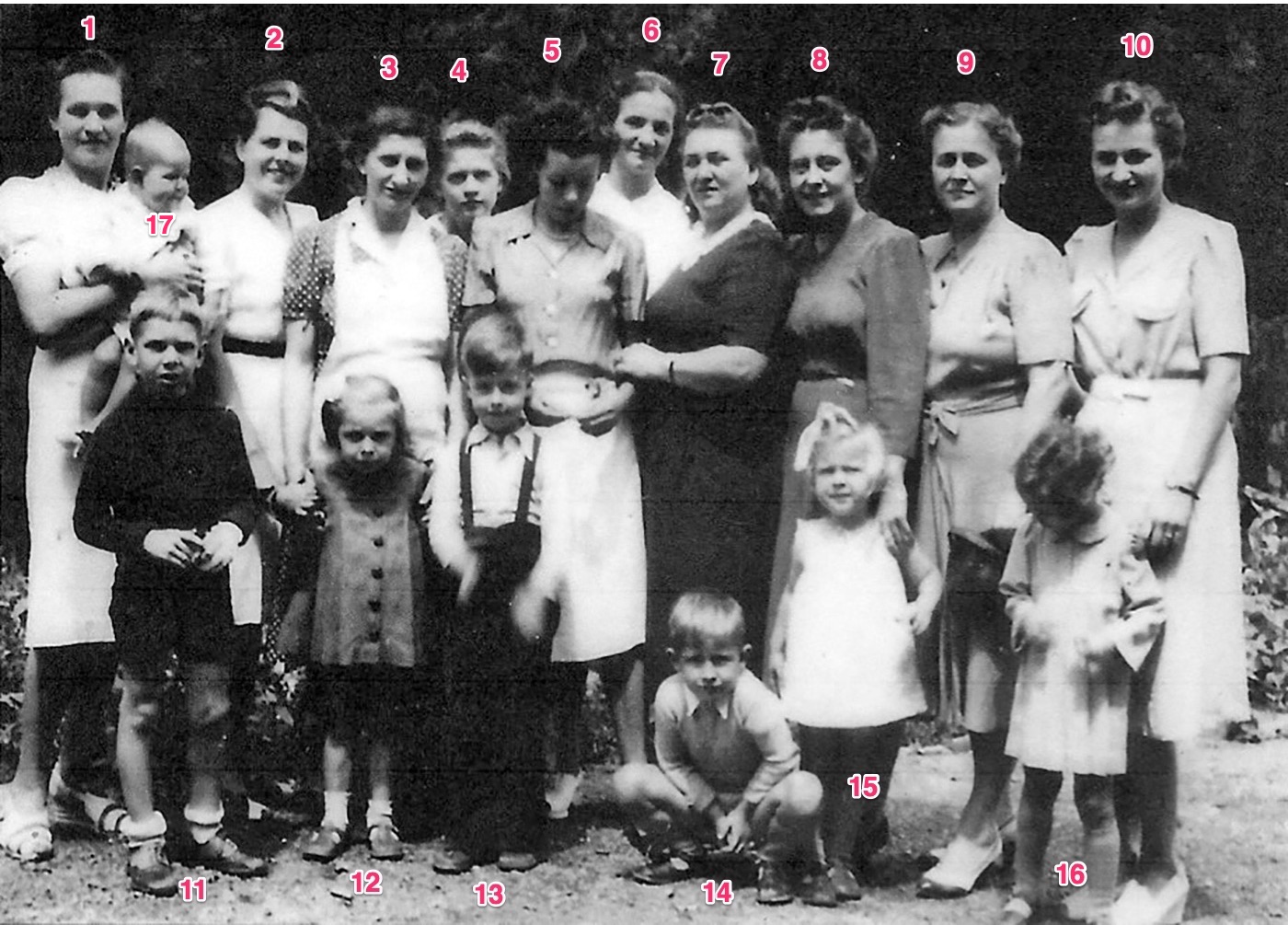
Identified persons:
1 – Marie Bohmanová, later re-married as Havrlantová
2 – Miroslava Smržáková, later re-married as Šíchová
3 – Anna Dufková
4 – Marie Dufková
5 – Marta Strausslerová, later re-married as Stoppard
6 – Mrs Červinková
7 – Mrs Jugasová
9 – Mrs Heimová
11 – Milan Bohman (son)
13 – Petr or Tomáš Straussler, later Stoppard
14 – Petr or Tomáš Straussler, later Stoppard
17 – Marie Bohmanová (daughter)
A group photograph of the Baťamen from Singapore, taken in the autumn of 1945

A group photograph of the volunteers from Baťa in Singapore, taken in the autumn of 1945

Contact the author: